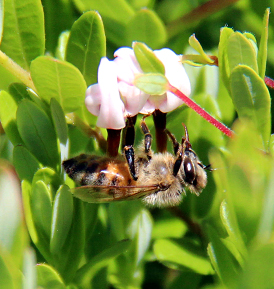Phone
608-123-4567Website
View WebsiteOffice Location
123 Ag Hall
Office Schedule
M-W 9am – 10am
Special Field
asdfasdfasdfasdf

BIO Tab
- Opsins are phospholipid scramblases in all domains of life
- Opsins are Phospholipid Scramblases in All Domains of Life
- On the Role of a Conserved Tryptophan in the Chromophore Pocket of Cyanobacteriochrome
- Orthogonal translation with 5-cyanotryptophan as an infrared probe for local structural information, electrostatics, and hydrogen bondingdoi: 10.1002/pro.4705
- Diversity, distribution, and expression of opsin genes in freshwater lakesdoi: 10.1111/mec.16891
Type IV pili (T4P) are surface organelles that mediate attachment of bacteria to each other, to eukaryotic cells, and to non-living surfaces. Playing roles in biofilm formation, natural transformation, and movement across solid surfaces, T4P are dynamic filaments composed of thousands of copies of the small protein pilin, which is added to and removed from the filament base resulting in elongation and retraction of the pilus. A set of up to fifteen proteins, structurally similar to those of the Type II Secretion system (T2SS), is required for complete T4P function. Through our research on pilin maturation by the metalloenzyme PilD, on the components of the T4P and T2SS biogenesis complexes, and on the hexameric pilus retraction ATPase PilT (Misic, 2010, JMB), we are piecing together a model of pilus dynamics. This work may ultimately lead to development of vaccines or antimicrobials against pathogenic bacteria with Type IV pili or to novel nanotechnology applications.
BACTERIOPHYTOCHROMES
Bacteriophytochromes are red-light photoreceptors that sense environmental cues and mediate physiological responses from photosynthesis to phototaxis Our 1.45 angstrom resolution structure of the chromophore binding domain of Deinococcus radiodurans bacteriopytochrome (DrCBD) (Wagner, 2007, JBC) has served as a model for understanding the molecular mechanism of light absorption by this class of proteins. The conformational changes induced by photon absorption lead to signal transduction in the organism and regulation of physiological responses. We have used structure-guided engineering of bacteriophytochrome photochemistry to create variants with enhanced properties, namely infrared fluorophores for use as biomarkers in mammals (Auldridge, 2011, JBC). The fluorescent proteins currently used for in vivo visualization are excited in the visible region of the electromagnetic spectrum; these signals are absorbed or scattered by lipids, water and hemoglobin. The superior penetration of near-infrared wavelengths coupled with the ubiquity of DrCBD’s biliverdin chromophore in mammals make bacteriophytochromes ideally suited to deep-tissue in vivo applications. These biotechnology applications along with discovery of basic molecular mechanisms of light-dependent signal transduction underlie our interests in this ancient family of sensory proteins.
teahcing
extension work
services
honors
patents
asdfasdfasdf
asdfasdfasdf
asdfasdfasdf

